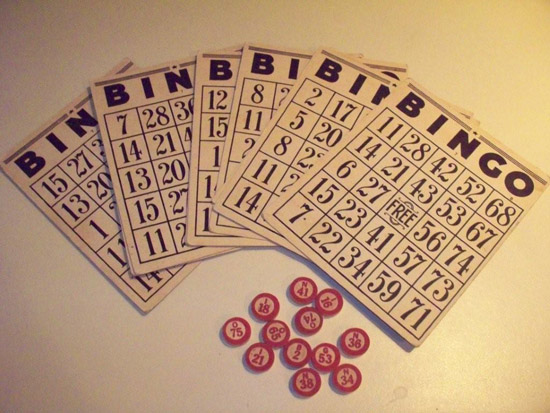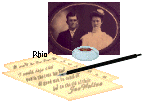Still gathering a bit of information here or there that I can share your way. I visited with a few other people who had contacts with rural schools as well as what I remember Mom saying the students did for recess and in between. I did a little reviewing of the key activities and thought I would send them to you. Will send a few scans of classroom projects. They will follow shortly. ~Randy Schmitt (son of teacher, Miss Minnie Koch--later Mrs. Alfred Schmitt)
Traditional games/activities played in country school included:
1. "Pom Pom Pullaway" A form of tag where students run between two safe lines until caught and are converted into joining the taggers.
2. "Fox and Geese" The object of "Fox and Geese" is to be the first Goose to make it to the hen house without getting tagged by the Fox. This person then becomes the Fox for the next round of play. These are the directions:
- All the players form a large circle in a snowy yard by walking one person behind the other in a circle to trample down the snow. We like to make our circles at least 20 feet in diameter. If you are playing this game with small children, we recommend making a smaller circle. Although deep snow is not required for this game, the deeper the snow, the more challenging this game is.
- Stand on one side of the circle and walk through to the other side in a straight line to cut the circle in half. Continue cutting the circle into sections in this way until you have at least 4 sections. The more sections you have, the easier it is for the person who is the Fox to tag the Geese. The center spot is called the "hen house."
- When the playing field is complete, choose a player to be the Fox. The Fox starts by standing in the center of the circle (the hen house), and tries to tag any "goose" that strays from his safety zone. All other players are Geese, who stand at various places along the outside circle.
- To start the game, the Fox calls out "Geese, Geese, gannio! How many Geese have you today?". The Geese reply, "More than you can catch and carry away!". Then the Geese run around the outside of the circle or on the spokes while the Fox chases them. The Geese try to make it to the hen house (center) without getting tagged by the Fox. The first Goose to make it to the hen house without getting tagged becomes the Fox in the next round.
3. "Hide and Seek" The game is still popular and varies in the amount of time the seeker waits to search out the hidden students.
4. "Red Light Green Light" The "it" person stands at one end of the playing field with the rest of the players at the other end. "It" turns his/her back to the others and calls out "Green light!" The players then run as fast as they can towards "it". At any time, "it" can face the players, calling out "Red light", and the others must freeze in place. If anyone fails to stop, that person is out or must return to the starting line. Other variations include calling out "Yellow light" as a diversion or they must walk instead of run to "it". Calling Yellow Light has no consequence. The first player to reach the person who is "it" wins and becomes "it" for the next round. In certain regions this game may be known as "sneak up on granny." In this version the person who is "it" is the "granny" and does not call out "red light" or "green light."
5. "Prisoner's Base"
The class is divided in half and a line of chalk placed down the middle between the two teams. About 20-30 feet in back of each team a large square (prison) is drawn on the ground using chalk. Each team picks one person to be the prisoner of the other team (usually someone who could run fast). Then each team tries to free their prisoner by sending a team member to the prison through the opposing team to bring him/her back without getting captured by a member of the opposing team. If the person attempting to rescue their own prisoner makes in to the prison through the opposing team without being caught, he/she is safe while in the prison and can pick their own time to run with the prisoner back to their own side of the line. If the team member is caught by the opposing team, he/she also becomes a prisoner needing rescue. So each team is busy both trying to rescue their own prisoners and protect the prisoner(s) from the opposite side from getting rescued. At the end of recess, the team with the most prisoners wins.
6. "Annie Annie Over"
In this game, two players, or two teams of players, stand on opposite sides of a small building. With a cry of "Annie Annie Over!", the ball is tossed over the roof of the school house. The kid(s) on the other side of the building try to catch the ball. If they catch it, they run to the other side of the building and try to tag someone out by throwing the ball at them.
7. Sledding, making snow forts, making snow angels, building snowmen,
snow ball fights, sliding on the ice
8. Hopscotch, tire swings, races with the littliest grades getting a headstart,
Follow the Leader
9. Jump rope and double jump rope, kick the can
10. Winter indoor activities include: checkers, Snake-and-Ladders, Charades, Bingo
11. Jacks: Jacks may start off with ones through tens, go to taps (one has to tap the surface after one picks up the jack and before one catches the ball) then catch the baskets (one has to throw the jacks in the free hand and then catch the ball).
12. Halloween costumes and contests, Christmas Program with poems,songs &
skits,Santa Cl aus appearing with treats, St.Valentine Day, Arbor Day for
clean up and tree planting.
13. "Red Rover, Red Rover"
The game is played between two imaginary lines, usually around thirty feet apart. Each team lines up along one of these lines, and the game starts when the first team (usually called the "East" or "South" team, although this does not relate to the actual relative location of the teams) calls out, "Red Rover, "Red Rover," send [name of player on opposite team] right over." The immediate goal for the person called is to run to the other line and break the chain (formed by the linking of hands). If the person called fails to break the chain, this player joins the team which called "Red rover". However, if the player successfully break the chain, this player may select either of the two "links" broken by the successful run, and send them to join the team that had been called out. The other team then calls out "Red Rover" for a player on the first team, and play continues. When only one player is left on a team, he must try and break through a link. If he does not succeed, the opposing team wins. Otherwise, they are able to get a player back for their team.
Subject: Country School lunches
Normally children would bring leftover food from home such as cornbread or biscuits, cold meat and cheese, raw vegetables, fruit or whatever else they could afford to bring. Their food was homemade. A piece of fruit such as an apple was common especially to rural students who often had an orchard tree or two on the farm. Lunch could also include fresh milk from the cow. Sometimes chocolate syrup was mixed with the milk so the children could enjoy chocolate milk. In both time periods, the children would carry their food in lunch pails. These pails were normally whatever they could find at home such as old syrup cans, coffee cans, or lard cans. Rarely, some lucky children may have had manufactured lunch pails. It did not really matter what these pails were as long as they had a handle and could hold the children’s lunches. A favorite lunch for my mom and her siblings were Pfannkuchen, German pancakes. When cooled the pancakes were sprinkled with sugar and rolled up to be eaten at lunch. ~Randy Schmitt
Henry No. 4 memories and projects by teacher, Miss Minnie Koch, who taught this school from 1942-1948.

These are three projects which Mom made for me in the late 1950's. She used three original trace patterns which she had bought and used for her classes in Henry Township. The Santa has hung on in our home at Christmas for over 50 years. I believe Mom used the original pattern to have students create a Santa at Christmas time. The Eskimo and policeman were either part of a civics or social studies/art activity at Henry Township. The rosey cheeks is so characteristic of the art of the 1930's and 1940's. ~Shared by Miss Minnie Koch's son, Randy Schmitt
~~~~~
B - I - N - G - O

Bingo game Mom purchased and used with students at Henry 4. The call numbers are wooden and the cards are overzsized. It served Mom well in her teaching career, and I used it to teach numbers in my German classes. ~Randy
~~~~~~

I thought I'd share one last picture. It is Mom's lunchbox which as a teacher at Henry she carried each day to school. The lantern is Dad's, and he said many a night he used it to head upstairs to bed. Kind of a glimpse of my special past and two wonderful parents who were and are special to me. Take care and thanks again for all your hard work. It's been a special journey for me. ~Randy and Marilyn Schmitt
|




